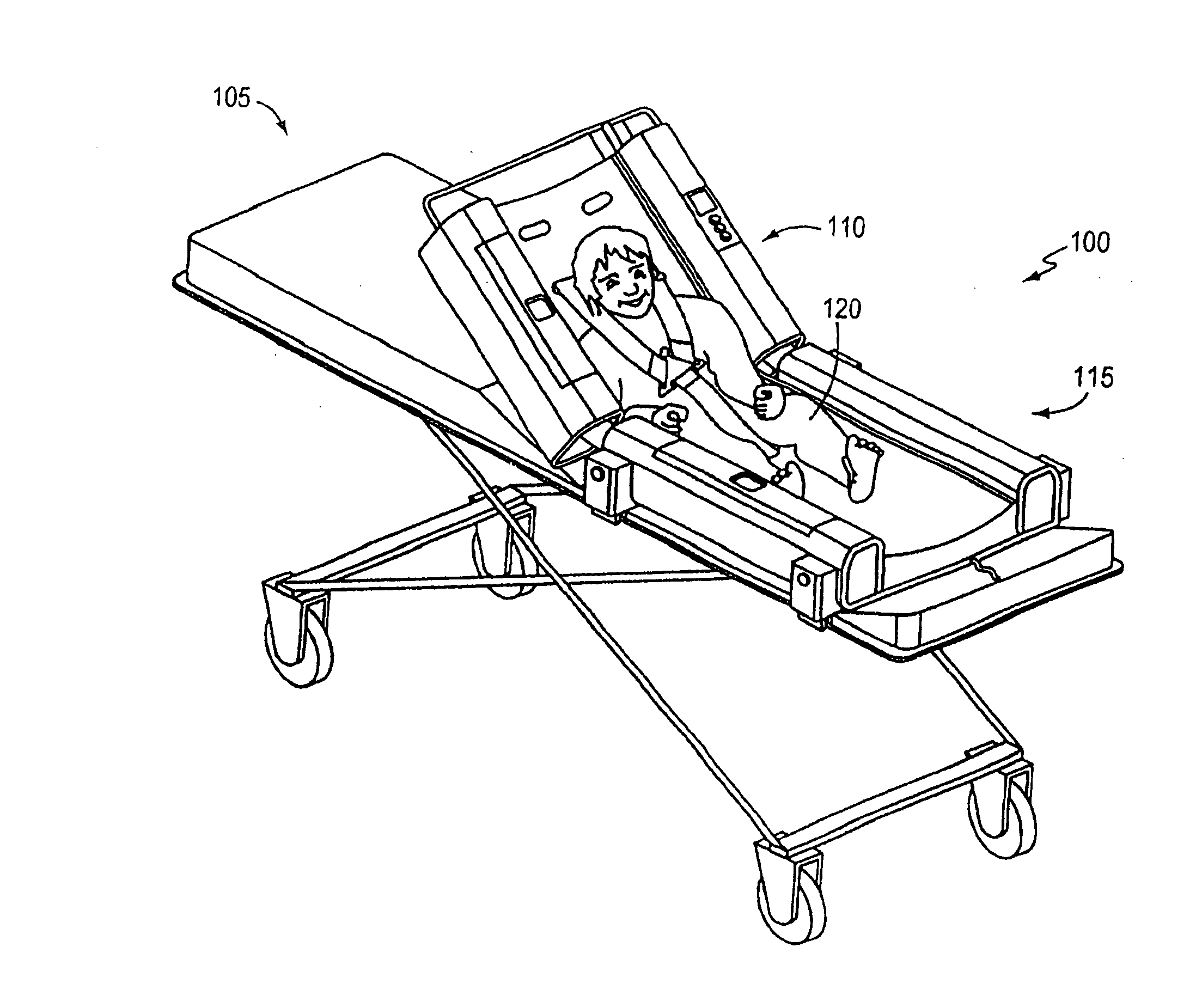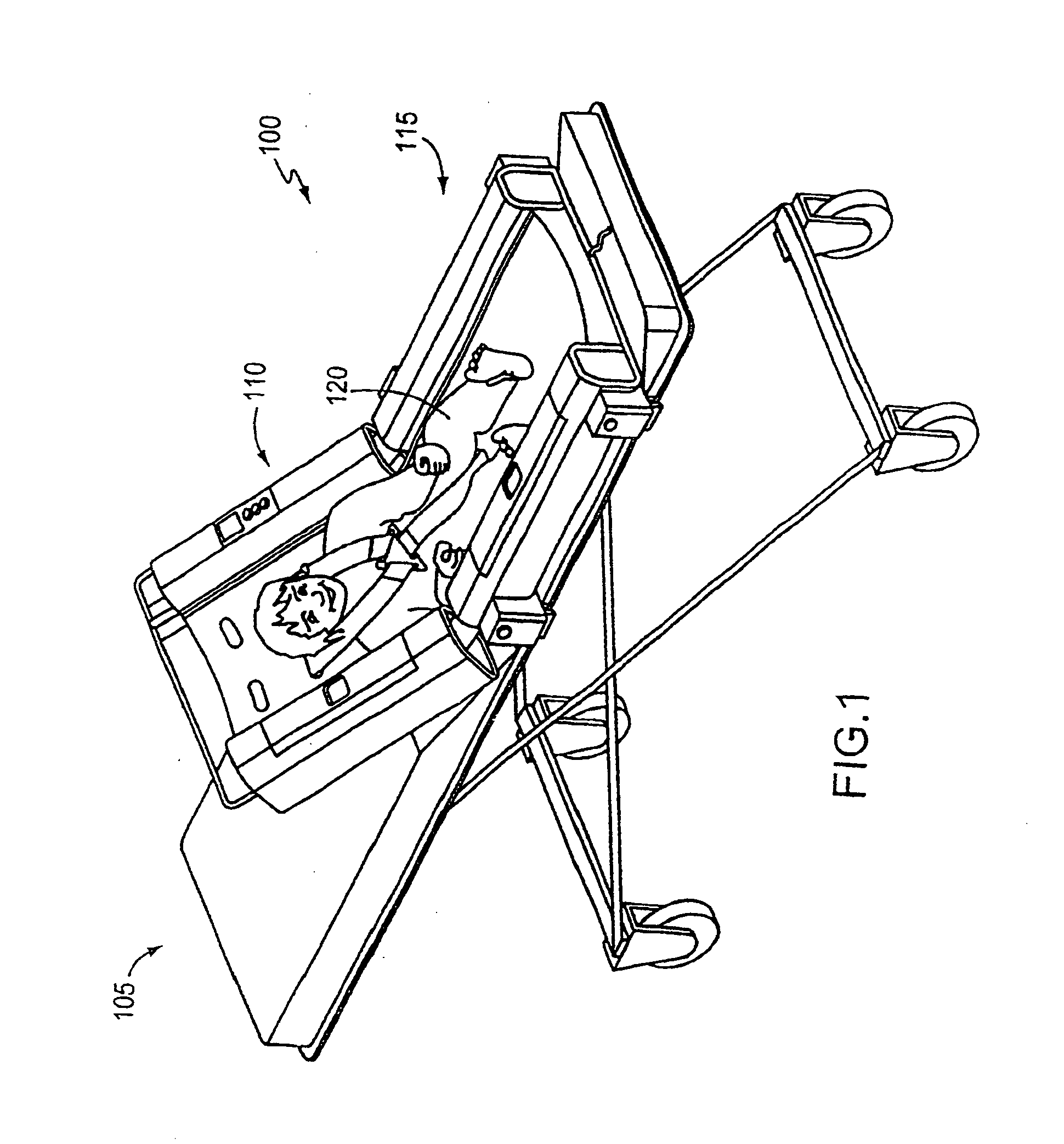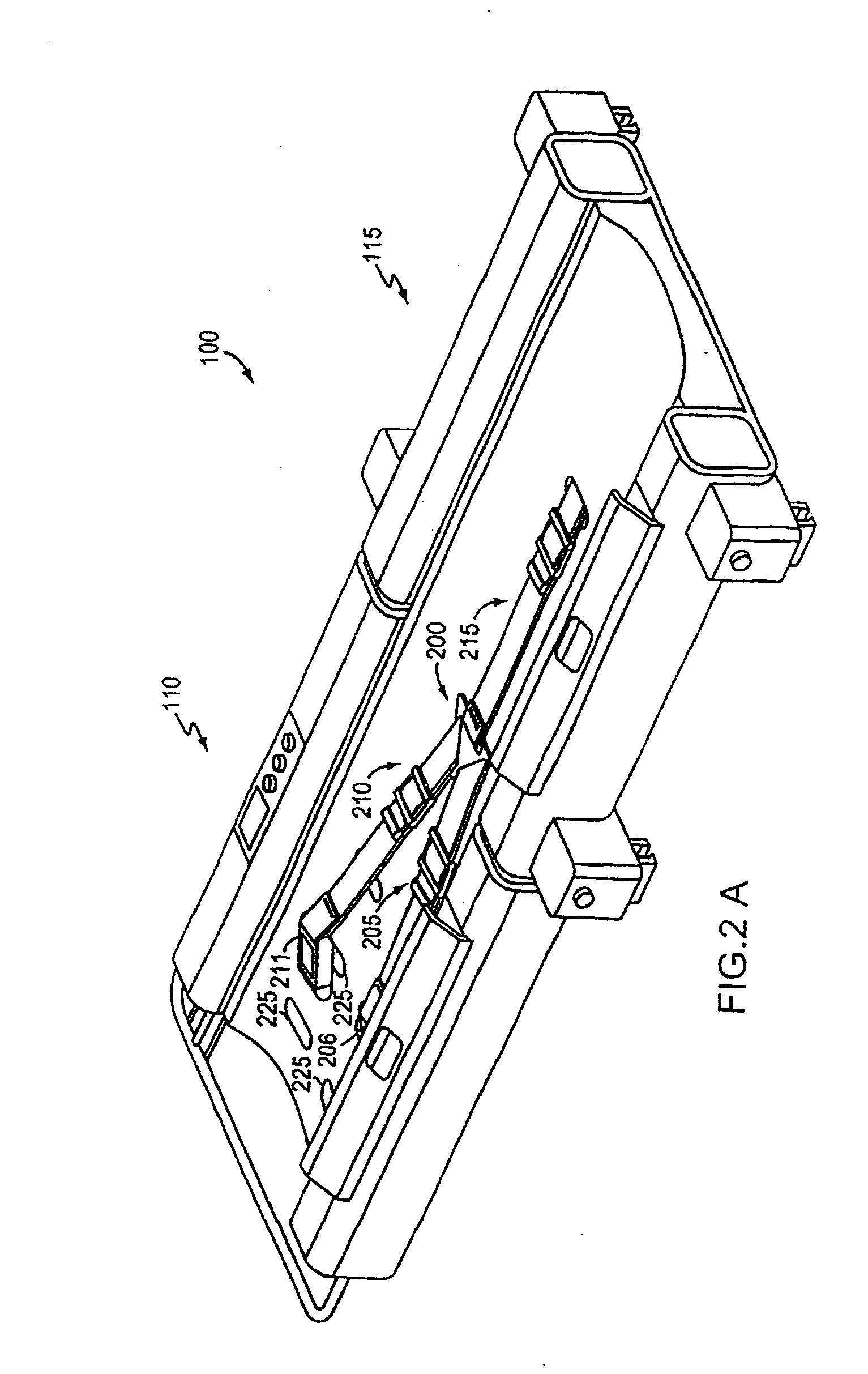It is, however, the ability to safely and effectively transport
small children that causes the greatest challenge to the medical professional.
In addition, space limitations in an ambulance, for example, demand easy storage for this equipment.
Yet, typical or conventional stretchers do not transport children safely.
Usually medical personnel cannot apply enough tension to the straps to safely restrain a child.
In addition, the location of the straps may impair medical personnel from performing life-saving procedures.
Additionally, since a small child may be still somewhat mobile, they are at risk of incurring additional injuries during the transport.
As a consequence,
strapping a child directly to a stretcher does not adequately meet the needs of medical personnel.
Similarly,
strapping a mother who holds a child to a stretcher does not satisfy the above-mentioned needs.
Though this technique uses equipment that operates efficiently and stores easily, it hinders safe transport.
If the ambulance stops suddenly and the mother releases the child, the child may “fly forward” in the ambulance causing further injury.
If the mother is successful in “holding on” to her child, the child can still be injured, if the mother's weight is thrown forward crushing the child against the seatbelt.
Finally, because the mother's hands cover a portion of the child, she impairs the administration of
medical treatment on that area.
Thus,
strapping a mother with child fails to meet the needs of medical personnel.
Further, strapping a typical
car seat that holds a child to a stretcher also fails to meet the needs of medical personnel.
Though the
car seat can adapt to children of varying size, this method impairs safe transport.
Since the seat belts in an automobile differ from the straps on a stretcher, and the shape of a
car seat differs from the shape of a stretcher, the car seat does not attach securely to the stretcher.
This lack of security threatens safety by creating the potential for the car seat to shift or come loose during transport.
In addition, the car seat impairs the administration of medical procedures.
By removing the child from the seat, medical personnel threaten the safety of the child.
While this device provides some improvement, it impairs administration of CPR.
In addition, connecting this device to a stretcher using straps, demands that medical personnel spend additional time securing the device.
Although this device includes a restraining feature that confines the child to the device, this feature does not adjust to children of varying size.
Though the collapsibility feature enables easy storage, this pediatric device is difficult to attach to the stretcher.
Medical personnel sacrifice time in securing the device to the stretcher.
Multiple moving panels increase the risk, not only of increased “pinch points” for the patient, but also of mistakes made by personnel during “
assembly.” Finally, using straps to secure the device creates the potential that the device may move during transport.
This potential movement can hinder performance of lifesaving medical procedures.
In sum, previous pediatric
emergency transport devices do not transport safely, enable performance of medical procedures, operate efficiently, adapt to children of varying size, and store easily.
Therefore, they do not satisfy all of the needs of medical personnel.
Yet further, when a child is critically injured, (i.e. a head or
neck injury, or typically any injury where a child has lost
consciousness and there is the potential that a
spinal injury may have occurred) emergency medical technicians must immobilize the patient, often securing the neck first with a
cervical collar, and then the entire body to a rigid surface (typically a backboard) to prevent movement that could cause further injury to the neck or
spinal column.
Unless the vehicle dispatched is from a child-specific emergency facility, these supplies are often mixed in with adult supplies, and precious life-saving seconds can be wasted, trying to locate them during a trauma call.
Therefore, while an emergency
technician who secures a
pediatric patient to a backboard may now have the ability to secure a pediatric patient safely for transport, such
technician does not have an efficient means of accessing pediatric supplies for treatment en-
route or obtaining accurate weight information to properly administer medications.
An additional challenge to transporting a pediatric patient is comfort and
sanitation.
A child being transported in an emergency situation is often frightened and may often have an injury that causes the release of bodily fluids.
Known devices generally consist of a single pad, which, while it may provide some comfort to the child, is typically not designed to be very soft and may not be designed to
resist the transfer of bodily fluids.
Finally, restoring a pediatric patient's temperature when it has been stressed beyond normal limits can mean the difference between life or death.
 Login to View More
Login to View More  Login to View More
Login to View More 


